Figure shows an Amperian path ABCDA. Part ABC is in vertical plane PSTU while part CDA is in horizontal plane PQRS. Direction of circulation along the path is shown by an arrow near point B and at D. ∮→B.d→l for this path according to Ampere's law will be
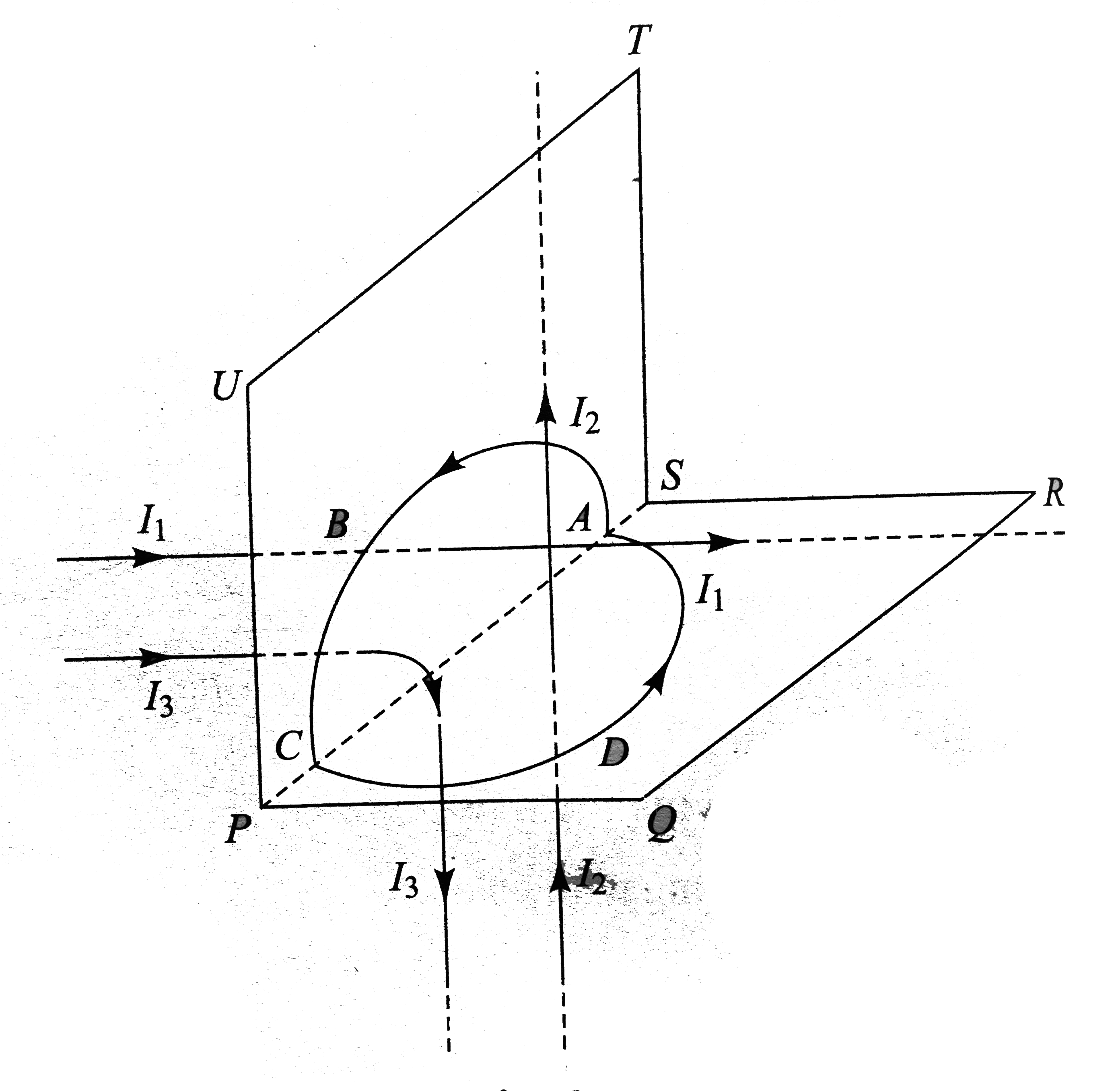
(i1−i2+i3)μ0
(−i1+i2)μ0
i3μ0
(i1+i2)μ0
The correct Answer is:D
∮→B.→d→I=μ0(i1+i3+i2−i3)=μ0(i1+i2)
[since for the given direction of circumlation i3 entering at PSTUABCDA is positive while i3 at PQRS is negative]
∮→B.→dl=∮→B.→dl+∮→B.→dl=μ0i1+μ0i2=μ0(i1+i2)
ABCDAABCACDAC
Topper's Solved these Questions
- SOURCE AND EFFECT OF MAGNETIC FIELDBOOK - A2ZCHAPTER - SOURCE AND EFFECT OF MAGNETIC FIELDEXERCISE - Problems Based On Mixed Concepts
32 Videos
- SOURCE AND EFFECT OF MAGNETIC FIELDBOOK - A2ZCHAPTER - SOURCE AND EFFECT OF MAGNETIC FIELDEXERCISE - Section B - Assertion Reasoning
31 Videos
- SOURCE AND EFFECT OF MAGNETIC FIELDBOOK - A2ZCHAPTER - SOURCE AND EFFECT OF MAGNETIC FIELDEXERCISE - Magnetic Field Due To Current
44 Videos
- SEMICONDUCTOR ELECTRONICSBOOK - A2ZCHAPTER - SEMICONDUCTOR ELECTRONICSEXERCISE - EXERCISE
29 Videos
- WAVE OPTICSBOOK - A2ZCHAPTER - WAVE OPTICSEXERCISE - Section D - Chapter End Test
29 Videos
Similar Questions
(a) A car starts moving (at point A) on a horizontal circular track and moves in anticlockwise sense. The speed of the car is made to increase uniformly. The car slips just after point D. The figure shows the friction force (f) acting on the car at points A, B, C and D. The length of the arrow indicates the magnitude of the friction and it is given that ∠D>∠B>∠C. At which point (A, B, C or D) the friction forces represented is certainly wrong ?
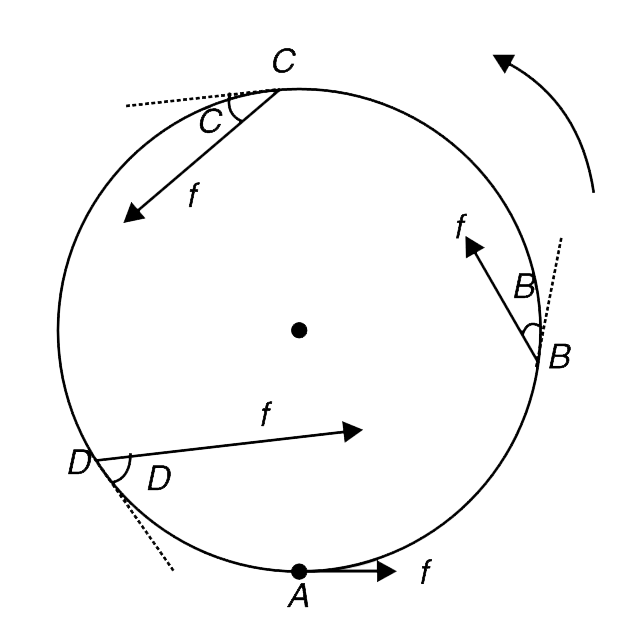
(b) A particle is moving along an expanding spiral (shown in fig) such that the normal force on the particle [i.e., component of force perpendicular to the path of the particle] remains constant in magnitude. The possible direction of acceleration(→a)of the particle has been shown at three points A, B and C on its path. At which of these points the direction of acceleration has been represented correctly.
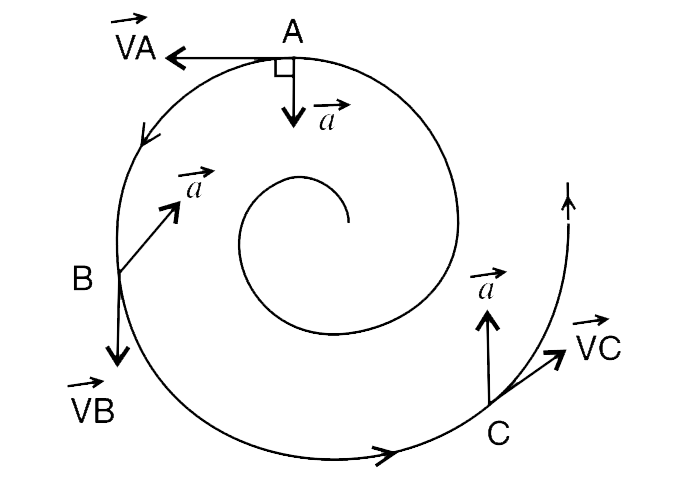
(c) A particle is moving in XY plane with a velocity . →v=4ˆi+2tˆjms−1 . Calculate its rate of change of speed and normal acceleration at t = 2 s.
View SolutionFigure shows three paths connecting points a and b, A single force F does the indicated work on a particle moving along each path in the indicated direction. On the basis of this information, is force F conservative?

View Solution
Knowledge Check
The figure shows a conducting loop ABCDA placed in a uniform magnetic field perpendicular to its plane. The part ABC is the (3/4)th portion of the square of side lengthl. The part ADC is a circular are. Of radius R. The points A and C are connected to a battery which supply a current I to the circuit. The magnetic force on the loop due to the field B is
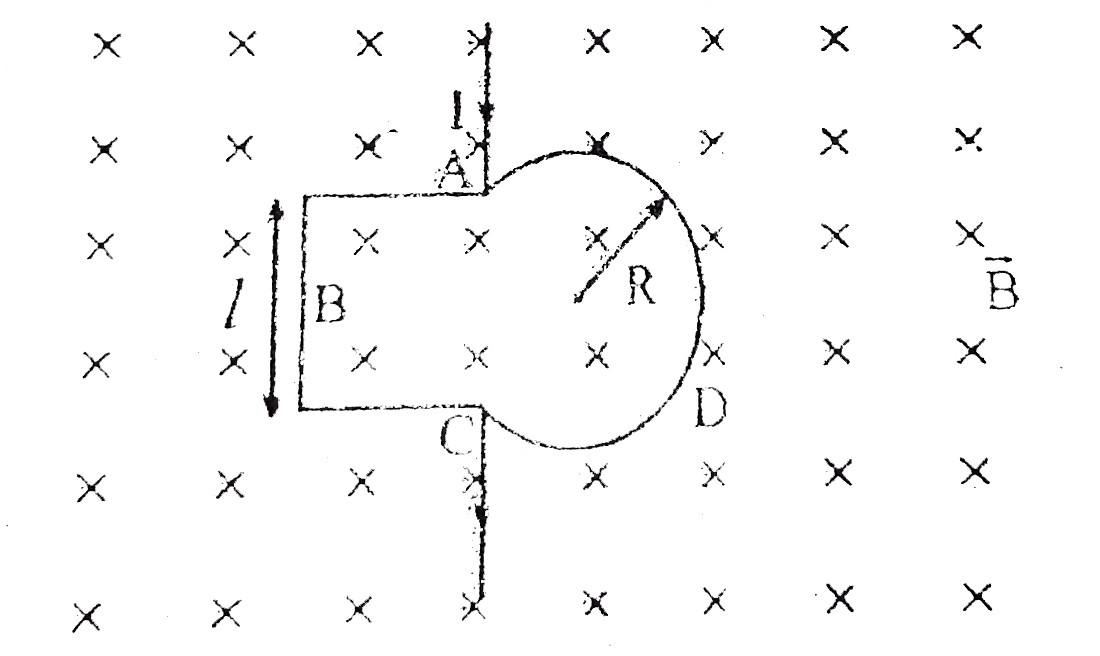 AzeroBBilC2BIRDBI/Rl+R
AzeroBBilC2BIRDBI/Rl+RAssertion A car moves along a road with uniform speed. The path of car lies in vertical plane and shown in fighre. The radius of curvature (R) of the path is same everywhere. If the car does not loose contact with road at the highest point, it can travel the shown path without loosing contact with road anywhere else.
Reason For car to loose contact with road, the normal reaction between car and road should be zero.
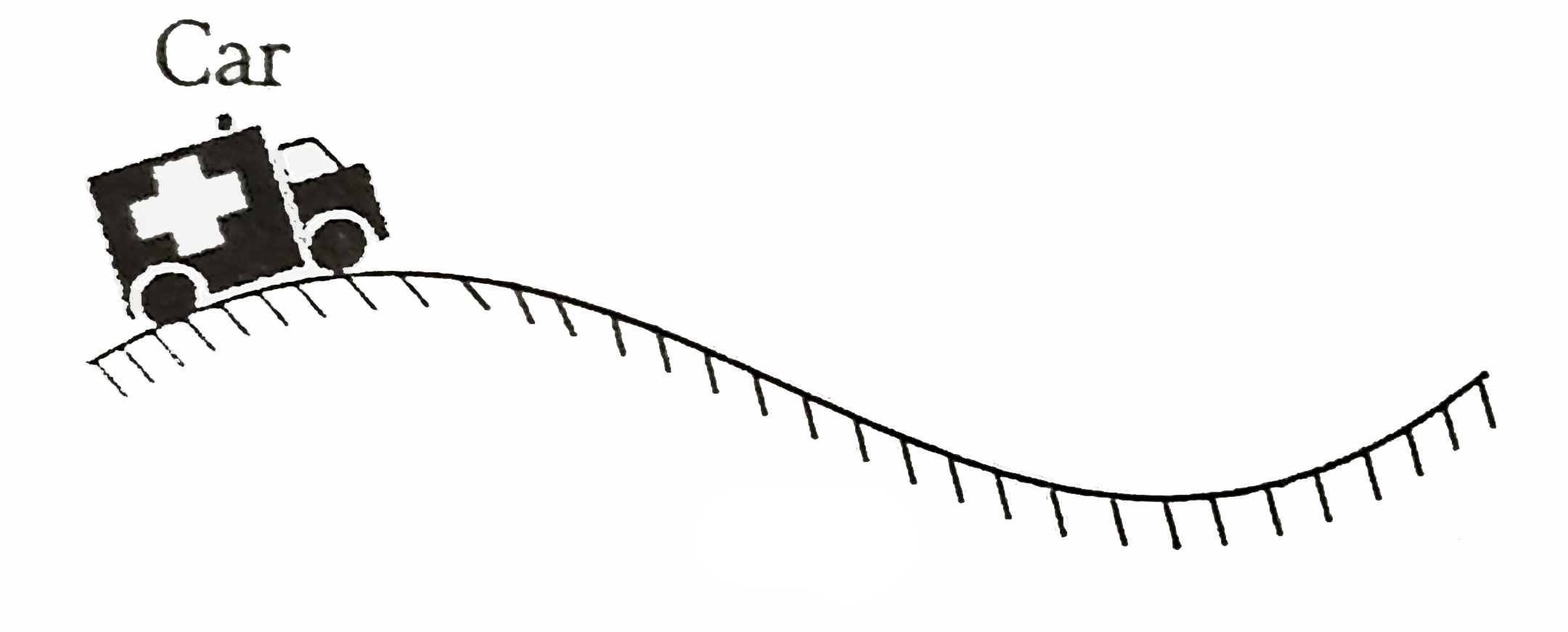 AIf both Assertion and Reason are correct and Reason is the correct explanation of Assertion.BIf both Assertion and Reason are correct but Reason is not the correct explanation of Assertion.CIf Assertion is true but Reason is false.DIf Assertion is false but Reason is true.
AIf both Assertion and Reason are correct and Reason is the correct explanation of Assertion.BIf both Assertion and Reason are correct but Reason is not the correct explanation of Assertion.CIf Assertion is true but Reason is false.DIf Assertion is false but Reason is true.A small ball of mass m and charge q is attached to the bottom end of a piece of negligible mass thread of length l, whose top end is fixed. The system formed by the thread and ball is in vertical plane and is in uniform horizontal magnetic field B, which is perpendicular to the plane of figure and points into the paper
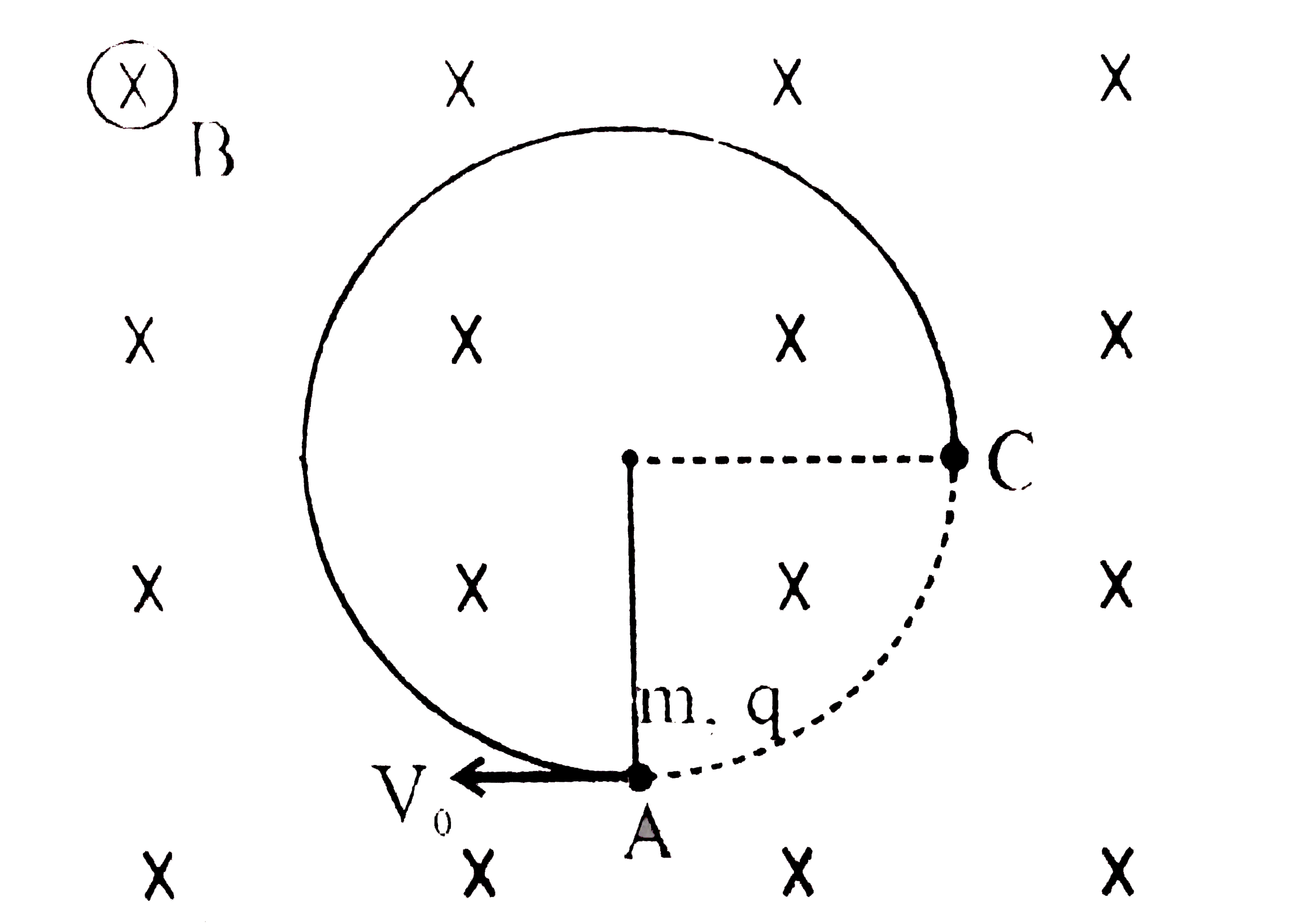
The ball is started with a velocity v0 from lower most point of circle in a direction perpendicular both to the magnetic induction and to direction of thread. The ball moves along a circular path such that thread remains tight during the whole motion. Neglect any loss of enery.
Choose CORRECT statementAIf direction of magnetic field is reversed then value of B will be same as calculated in above question of this paragraphBIf B is reversed, then conservation of energy will still be applicableCIf magnetic field were not present then particle will complete vertical circle for any value of v0DAll of above are correct
A conducting rod of length l is higed at point O. It is free to rotate in a vertical plane. There exists a uniform magnetic field →B in horizontal direction. The rod is released from the position shown in figure. Potential difference between the two ends of the rod is proportional to
View SolutionThe figure shows four pairs of polarizing sheets, seen face-on. Each pair is mounted in the path of initially unpolarized light. The polarizing direction of each sheet (indicated by the dashed line) is referenced to either a horizontal x -axis or a vertical y axis. Rank the pair according to the fraction of the initial intensity that they pass, greatest first
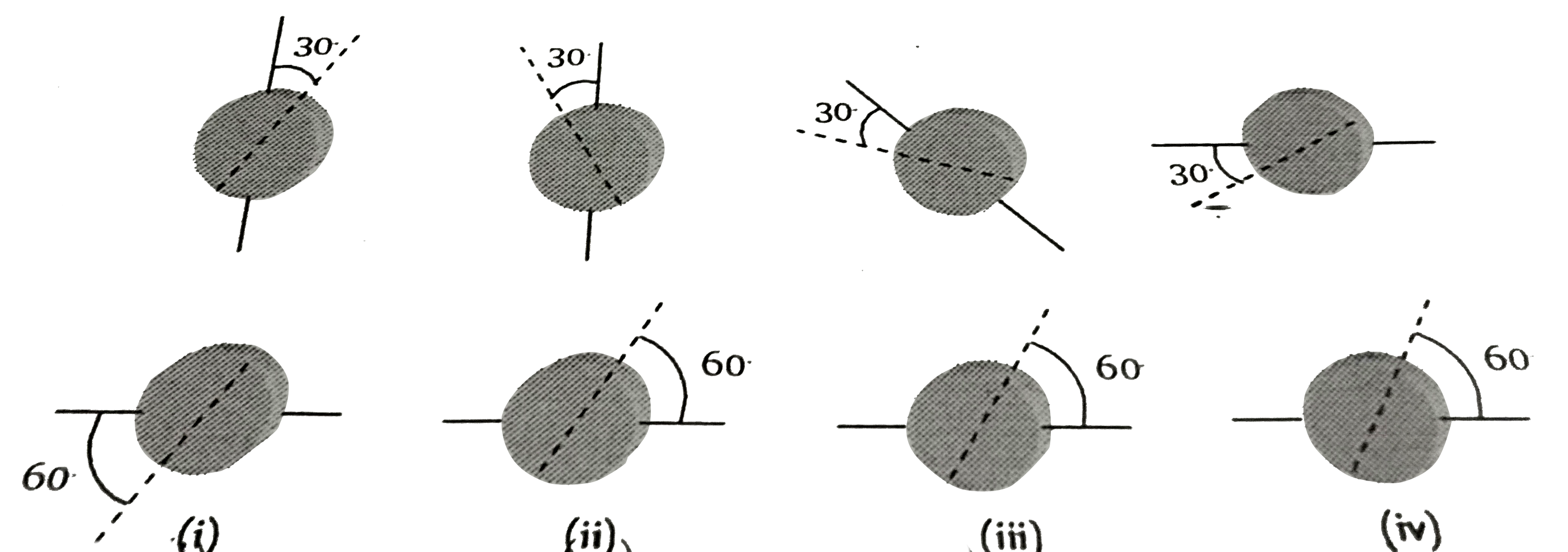
View SolutionThe figure shows four pairs of polarizing sheets, seen face-on. Each pair is mounted in the path of initially unpolarised light. The polarizing direction of each sheet (indicated by the dashed line) is referenced to either a horizontal x-axis or a vertical y axis. Rank the pair according to the fraction of the initial intensity that they pass, greatest first

View SolutionFigure. shows a conducting loop ABCDA placed in a uniform magnetic field (strength B) perpendicular to its plane. The part ABC is the (three-fourth) portion of the square of side length l. The part ADC is a circular arc of radius R. The points A and C are connected to a battery which supplies a current I to the circuit. The magnetic force on the loop due to the field B is

View SolutionA small ball of mass m and charge q is attached to the bottom end of a piece of negligible mass thread of length l, whose top end is fixed. The system formed by the thread and ball is in vertical plane and is in uniform horizontal magnetic field B, which is perpendicular to the plane of figure and points into the paper
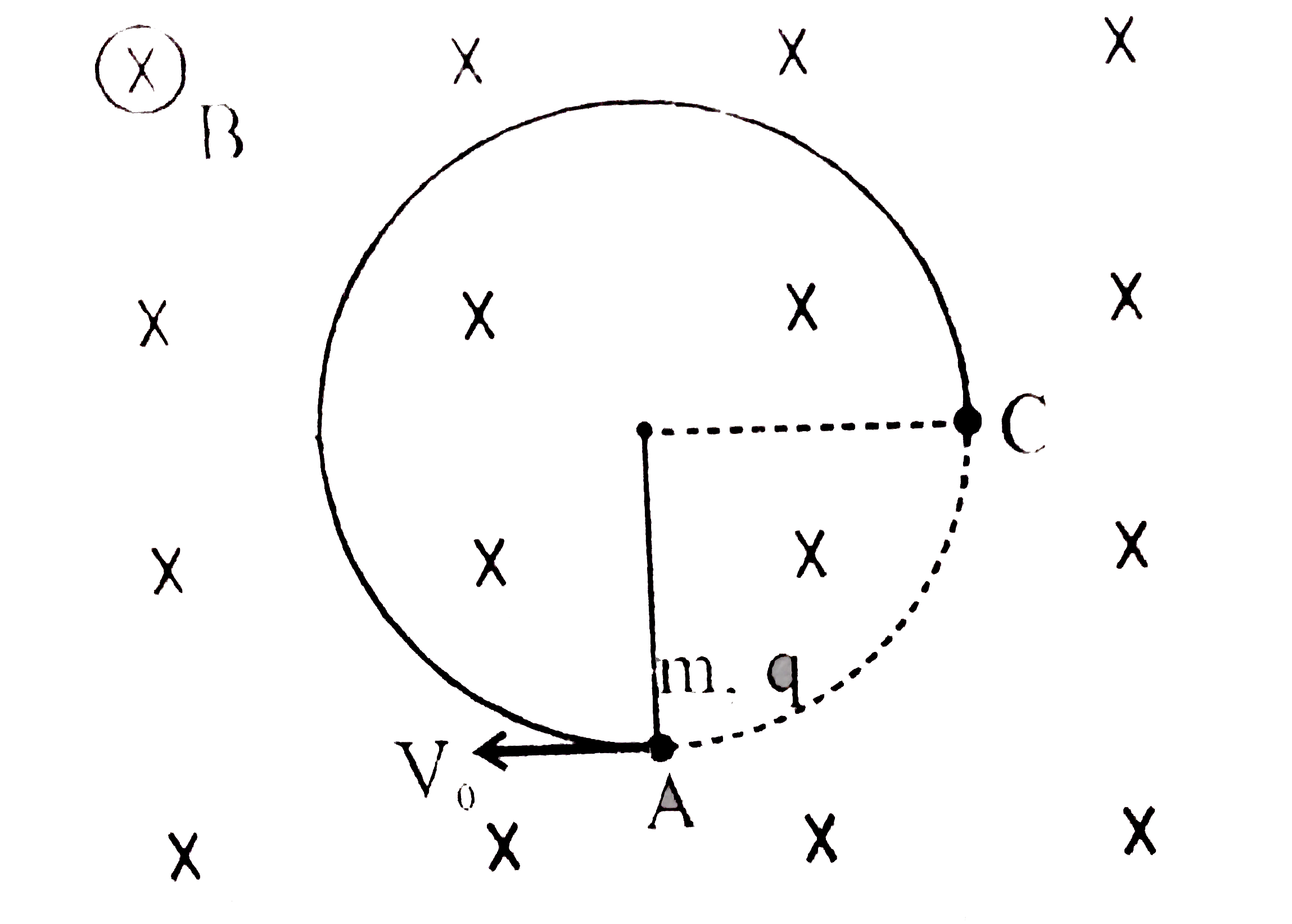
The ball is started with a velocity v0 from lower most point of circle in a direction perpendicular both to the magnetic induction and to direction of thread. The ball moves along a circular path such that thread remains tight during the whole motion. Neglect any loss of enery.
What is the magnitude of magnetic induction B, if the minimum initial speed at which the described motion of ball (complete vertical circular motion) occurs is V0=12√17gL
View Solution
